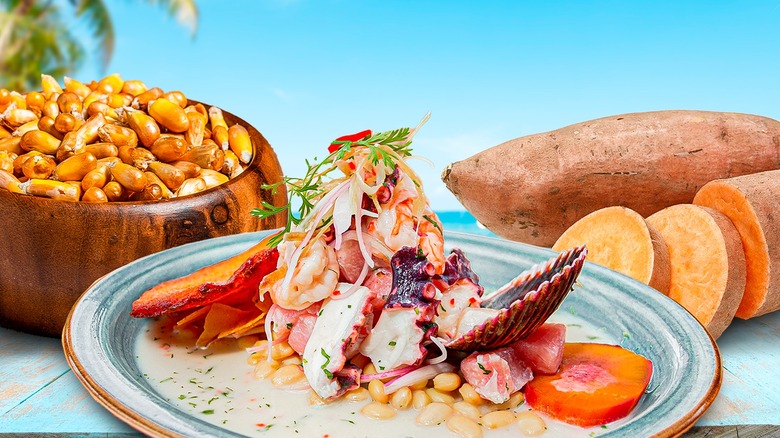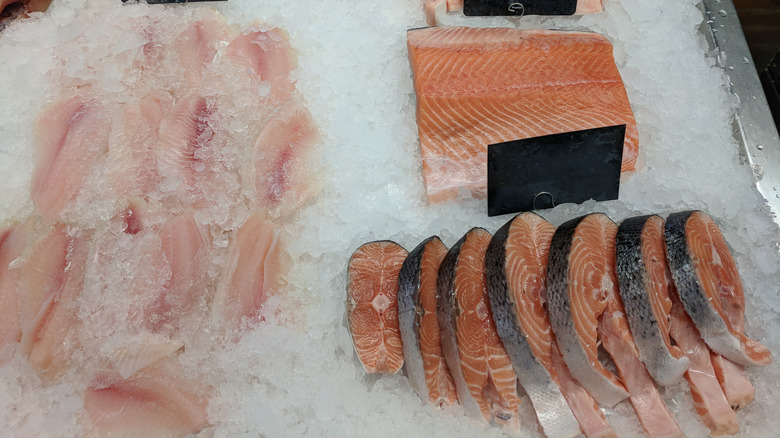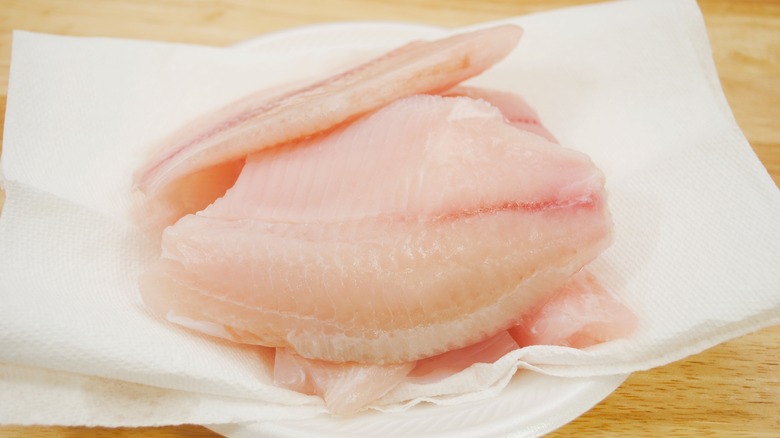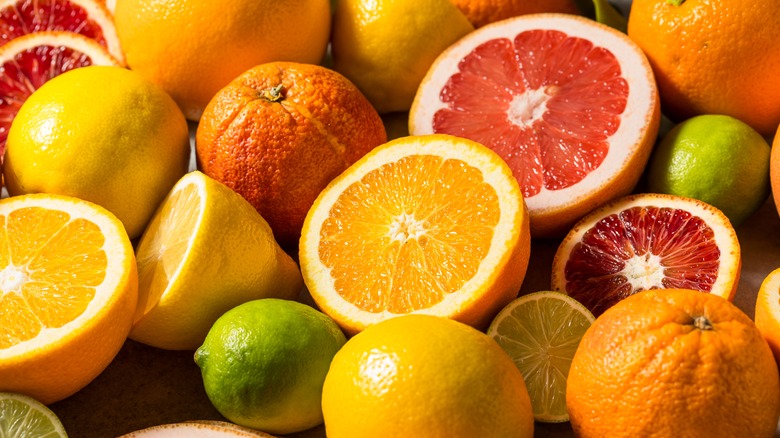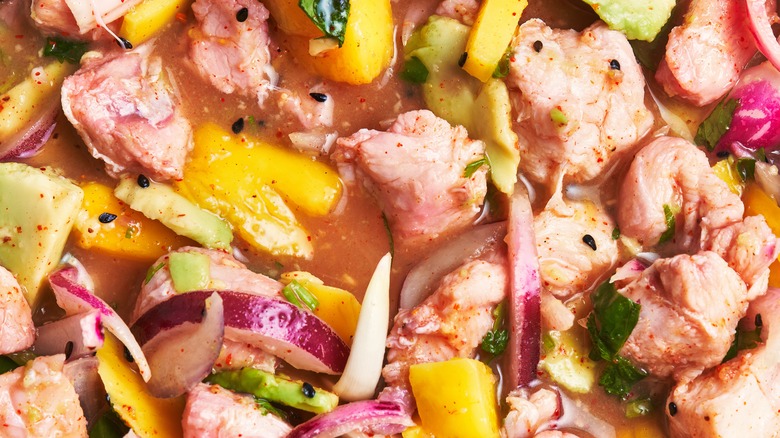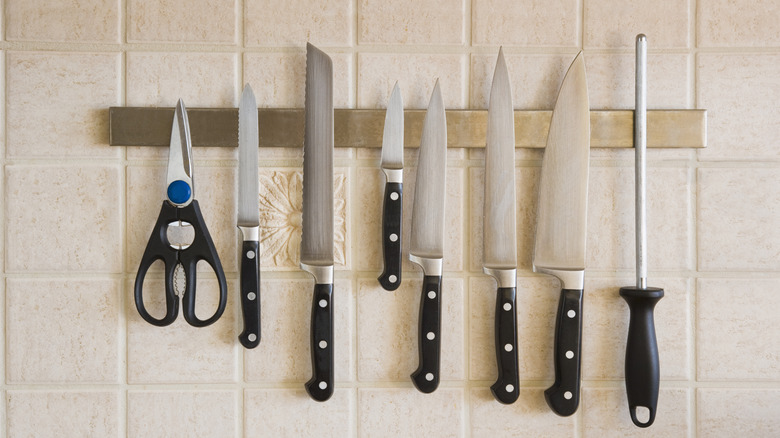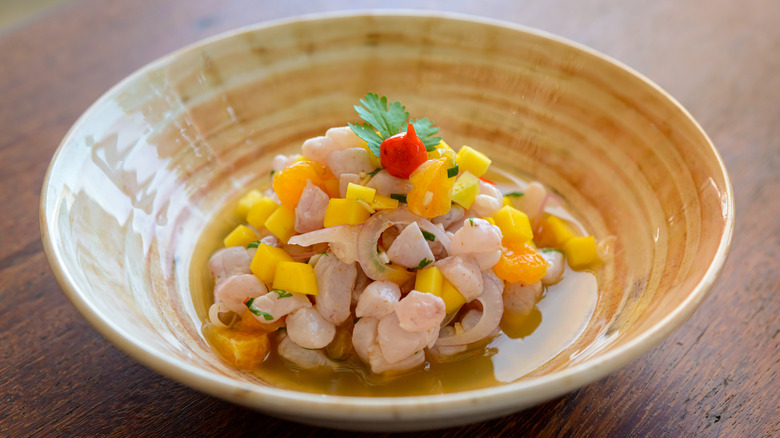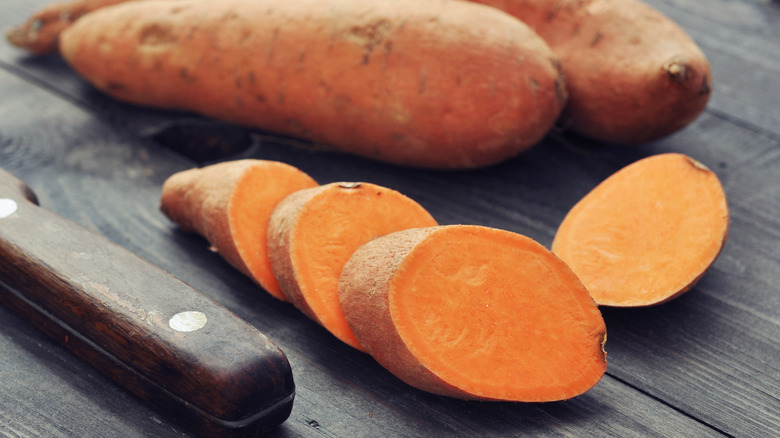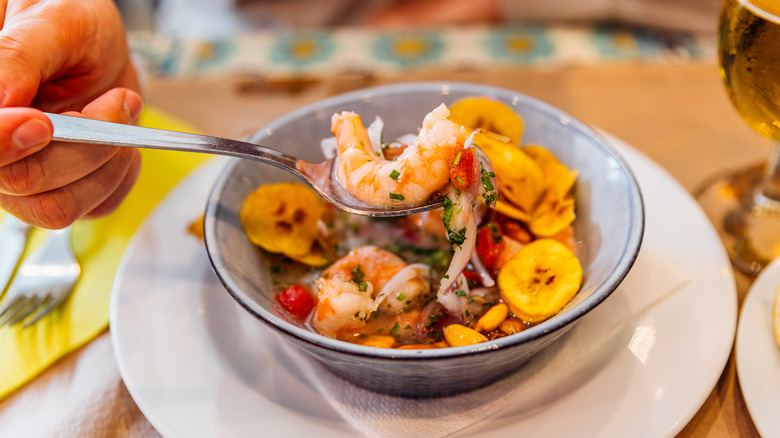A Peruvian Gourmet Chef Offers 8 Tips For Making The Best Fresh Ceviche
Unless you're a sushi fan, the thought of eating raw fish is probably a turnoff. If that's the case, you've probably never tried ceviche. But here's the thing about classic ceviche, a seafood dish that originated in Peru and is now enjoyed worldwide — it isn't really raw.
Thanks to a chemical reaction that transforms proteins in raw fish as it soaks in an acidic marinade, the seafood actually "cooks" without the application of heat, turning white in color and becoming firm. But what's the best way to achieve this amazing reaction? Do you need a specific marinade? Do you need to marinate the fish for a certain length of time? Is citrus juice the way to go, or can vinegar be the secret ingredient for classic ceviche? And what about choosing which type of fish to use?
Since we weren't sure about the answers to these questions, we decided to check in with someone who makes ceviche for a living. Victoriano Lopez is the executive chef at La Mar — a high-end Peruvian eatery in San Francisco that specializes in seafood — and he prepares ceviche constantly at his restaurant. As a matter of fact, this Peruvian chef is such a fan of the delicacy that six different types of ceviche grace Lopez's menu, including a veggie option that is served without a single ounce of fish. With that many choices, we knew he'd have the answers to our most burning ceviche questions, and luckily he was happy to share a few.
White fish isn't the only fish that you can use for ceviche
White fish like snapper, halibut, and cod are all typical choices for ceviche. But those aren't the only options. We've also seen ceviche made with shellfish like shrimp or scallops, and with squid or octopus as well. While Victoriano Lopez tells us that local halibut is a preferred ceviche base at La Mar, he also uses sea bass and ever-changing selections from the catch of the day. "All the fresh fish is okay for ceviche, including tuna," Lopez says.
But no matter what type of seafood you choose as your ceviche base, Lopez says that it's imperative for the fish to be high-quality and very fresh. Lopez is so concerned about the quality of his fish and its freshness that his ceviche is made with seafood caught on the morning of the day it's prepared. That way the chef is guaranteed that his ceviche won't just taste good, it'll be safe to eat as well.
Paper towels will keep your fish fresh for 2 or 3 days
There are few feelings more satisfying than bringing a freshly caught fish home and preparing it that evening. Unfortunately, many fish weigh several pounds, and there's just no way to eat it all in one sitting. We certainly don't want to throw leftover seafood away, and we always have the option of finding the best way to freeze fish and cooking it later. But is it possible to safely make ceviche from a fish that was caught a day or two ago? Victoriano Lopez assures us that it is, as long as you store the fish correctly.
When you head to the seafood market, Lopez suggests making sure that the vendor cuts the fillets "perfectly." Then once you get home, wrap the freshly cut slabs tightly in clean paper towels, a technique that helps preserve fresh fish in the fridge and allows you to keep it "for two or three days" before making ceviche from it. The chef swears that if you follow these tips, when you pull the fish out of the refrigerator, it'll still be an excellent base for all types of ceviche.
Lime isn't the only citrus fruit you can use
No matter what kind of ceviche you make, citrus is a crucial ingredient. The acid in citrus juice causes the chemical reaction needed to alter fish proteins with a similar effect as cooking them with heat. The citrus typically found in a classic Peruvian ceviche is lime, but Victoriano Lopez tells us that's not the only way to go. With so many different citrus fruit options, the choice really just depends on your preference. While Lopez certainly uses limes, he also says that grapefruit is good for making ceviche — and citrusy passionfruit works well, too.
The chef says that "you can use passionfruit" for amazing ceviche, "because it's a little bit sweet-sour ... This flavor is different." However, Lopez warns that this type of ceviche should not contain lime juice as well, "because the passionfruit is very sour."
Nonetheless, Lopez says that he does blend citrus varieties in some of his ceviche recipes. For example, when using grapefruit juice in ceviche, he adds lime juice because "we need to get this a little more sour for marinating," and to create a complementary taste for the fish he's using. "It's like salad, where you need ... white vinegar, red vinegar, lime, or balsamic vinegar" to create a dressing that is appropriate for your choice of leafy greens, the chef explains.
There's no need to marinate fish for long when making ceviche
It's true that the key to a great ceviche is the marinade. But to marinate seafood like a chef, we must consider how long to soak fish in the marinade just as much as we think about the ingredients that go into it. While some recipes call for the fish to soak for at least 30 minutes, Victoriano Lopez says five to 10 minutes is all you really need if the fish is very fresh.
This wasn't always the case. Lopez says that a few decades ago, Peruvians used to marinate the fish "for hours." But the chef credits people from Japan who came to Peru with displaying how very fresh fish can be eaten raw with nothing but salt, soy sauce, and wasabi. So, Peruvian cooks started marinating ceviche for much shorter time periods, and Lopez says that this method better showcases the taste of seafood. "The fish is high quality. We have to keep the flavor," he explains.
Since fish typically used in ceviche should be freshly caught, you want to maintain its flavor, texture, and color. "When you marinate for hours, you lose everything," Lopez says. However, if you marinate the fish for just a few minutes, the quality of the fish — including all that luscious flavor and texture — remains intact.
Cut the fish into cubes with a sharp knife
When making ceviche, it's important to cut the fish into pieces that are small enough to allow the marinade to permeate the flesh so that the citric acid can work its magic, but not cut it into pieces so small that each is completely soaked through. According to Victoriano Lopez, slicing the fish into cubes measuring 1 inch by 1 inch is a safe bet, although your individual choice of cutting size will "depend [on] how you like it."
For this job, nothing is more important than the knife you choose, and if you cook often, you probably have several knives to choose from. While there are many types of knives that would work for making ceviche, what's most crucial is to use the sharpest one available in your kitchen arsenal. If you're keeping your knives sharp, this guarantees nice, perfectly even cuts — cuts that will create precisely cubed or sliced fish for ceviche, depending on your preference.
Serve your ceviche in a very cold, nonreactive bowl
Ever wonder if the bowls and plates that chefs pick for serving their dishes are just for show, or if they actually serve a purpose? Well, when it comes to ceviche, the bowls that hold this delicacy play an important role in properly preparing the food.
Similarly to why you shouldn't serve caviar in a metal bowl, never place ceviche in bowls made of copper, aluminum, or other metals, because the acid used in the marinade can leach molecules from those metals into the food, causing the ceviche to take on an awful metallic flavor that will negatively affect the whole dish. On the other hand, nonreactive bowls made from ceramic or glass are good choices, because the ceviche's acidic ingredients will not react at all with those materials.
But the bowl's material isn't the only thing you need to worry about when serving ceviche. Victoriano Lopez tells us that the bowl's temperature is also an important factor. Because ceviche is eaten chilled, "glass bowl or ceramic bowl, it's going to be very cold" to taste best, Lopez explains. You can even save time by preparing, chilling, and serving the ceviche all in the same nonreactive bowl. Not only will this result in less cookware to clean up, the ceviche itself will stay chilled thanks to the amount of time the bowl spent in the refrigerator during marinating.
Use sweet potatoes or choclo to accompany ceviche
One of the best things about ceviche isn't the dish itself, but what it's commonly served with. In Mexico and the U.S., that big bowl of deliciousness usually comes with sturdy tortilla chips or crackers. There's nothing we love more than grabbing a tortilla chip and piling as much ceviche on top of it as we can, then stuffing that big bite in our mouths without dropping a single piece of fish. Victoriano Lopez tells us that ceviche accompaniments are served in Peru as well — only instead of chips and crackers, their garnishes are typically sweet potatoes, choclo, and cancha.
"I think many people like it with rice," Lopez explains, adding that bread is another popular ceviche vessel. "But traditional [ceviche] garnish is choclo, sweet potatoes, or cancha." While large-kerneled choclo corn is often boiled on the cob and offered as a ceviche side dish, cancha is a type of pan-toasted dried corn snack, not unlike Corn Nuts. But no matter which garnish you choose, in Peru these are often found in the ceviche itself, rather than on the side, because they add another layer of texture and flavor to the dish, improving the whole experience.
Making the best ceviche requires the best experience
So, now you've chosen one of the best types of fish for ceviche, and you've sliced and diced and mixed it all together with your favorite citrus and garnishes. You've even let it marinate in the fridge for the perfect amount of time, which means there's only one thing left to do: savor that large bowl of deliciousness.
You could simply take your chips or crackers and dip them into the bowl, hoping to get scoopfuls of all those wonderful ingredients — but if you want to have the complete Peruvian experience, Victoriano Lopez recommends eating it straight out of the bowl with a spoon, like a soup. Do not use a fork, or you'll miss out on ceviche's flavorful leche de tigre ("tiger's milk") marinade juice, along with additional ingredients. In a single spoonful, "you have the juice, you know, the leche tigre, fish, sweet potatoes, cancha, right? Mix it together," advises Lopez. We're drooling just thinking about it.
